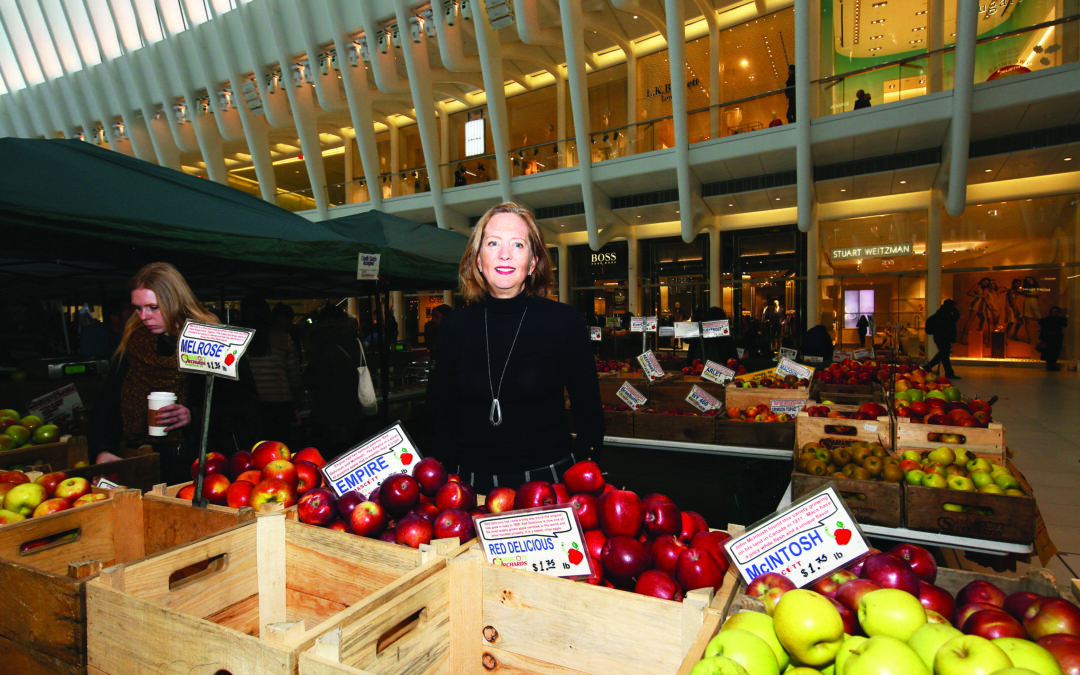Catherine McVay Hughes has been an integral part of rebuilding Lower Manhattan. Twice.
By DEBORAH L. MARTIN
*Republished from DOWNTOWN Winter 2019
PHOTOGRAPHY BY JOE WOOLHEAD
LIVING ONE BLOCK FROM THE WORLD TRADE CENTER for 30-plus years has given Catherine McVay Hughes a deep connection to the neighborhood, and it has shaped her career in public service. “Lower Manhattan is our home. We raised our children here.”
Hughes, who has an engineering degree from Princeton University and an MBA in management and finance from The Wharton v School, has been a member of Community Board1—serving Battery Park City, Financial District, Seaport Civic Center, TriBeCa, Ellis Island, Governor’s Island, and Liberty—for 20 years, and served as CB1 chair from 2012 to 2018. “I grew up in a family that was in the non-profit sector, and I went to a school [Princeton] whose motto was ‘In the Nation’s Service.’”
After 9/11, Hughes’ experience was put to good use. “Having a background in engineering, construction, environmental health, finance, and management, I felt I could contribute.”
From the reconstruction of Zuccotti Park to the Lower Manhattan Construction Command Center to conductivity studies and green initiatives, Hughes was integral to the planning and execution of the reconstruction of Downtown. “We were able to influence the reconstruction of Zuccotti Park in a positive way. It was going to be used as a staging area for construction and we changed that.” She is proud of that fight. “We needed to get some of our open space back as soon as possible.”
The World Trade Center is currently the largest green site in the country, due in no small part to Hughes’ influence and ability to organize the community. “We worked with both the public and private sectors to make sure that not only would the finished area be green and sustainable, but also to minimize the environmental and health impacts during construction.” She also fought, alongside Congresswoman Carolyn Maloney and then-State Senator Hillary Clinton to fund and pass the James Zadroga 9/11 Health and Compensation Act. And she continues to fight for the continuation of the “green necklace”that circles the waterfront from the west side to the east, with Battery Park as the emerald at the bottom.
Ten years after 9/11, on October 29, 2011, Superstorm Sandy hit. “We are surrounded by water on three sides here. What wasn’t impacted before [by 9/11] was now impacted. The WorldTrade Center site was underwater.” She continues,“The South Ferry subway station, which had just been built, was completely submerged.”
While Lower Manhattan is booming, Hughes knows that the larger conversation about. resiliency in the face of climate change must be ongoing, which is why she continues to work as the community liaison to the EPA, and sit on boards such as the South Street Seaport Museum and the Battery Park City Authority. “Fortifying our infrastructure is critical, especially now. That’s why we fought to get the High Water Mark signs [that mark locations where water rose upwards of 6.5 feet at The Seaport], to raise awareness. Working on resiliency is our top priority.” DTM

